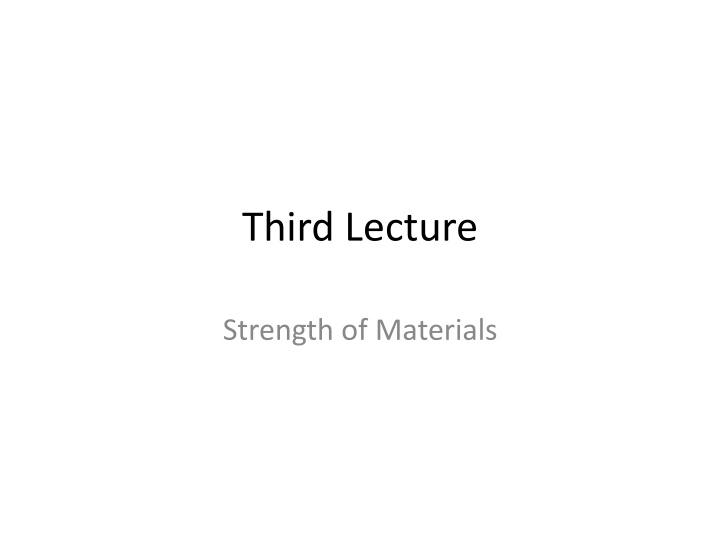
Strength of Materials: Pressure Vessel Analysis and Examples
Learn about the analysis of pressure vessels in the context of strength of materials, including calculations for tangential and longitudinal stresses, as well as practical examples and considerations for maximum internal pressure. Explore the principles behind thin-walled pressure vessels and their behavior under different stress conditions.
Download Presentation

Please find below an Image/Link to download the presentation.
The content on the website is provided AS IS for your information and personal use only. It may not be sold, licensed, or shared on other websites without obtaining consent from the author. If you encounter any issues during the download, it is possible that the publisher has removed the file from their server.
You are allowed to download the files provided on this website for personal or commercial use, subject to the condition that they are used lawfully. All files are the property of their respective owners.
The content on the website is provided AS IS for your information and personal use only. It may not be sold, licensed, or shared on other websites without obtaining consent from the author.
E N D
Presentation Transcript
Third Lecture Strength of Materials
Pressure Vessel Thin-Walled Pressure Vessels A tank or pipe carrying a fluid or gas under a pressure is subjected to tensile forces, which resist bursting, developed across longitudinal and transverse sections. TANGENTIAL STRESS (Circumferential Stress) Consider the tank shown being subjected to an internal pressure p. The length of the tank is L and the wall thickness is t. Isolating the right half of the tank:
LONGITUDINAL STRESS, L Consider the free body diagram in the transverse section of the tank: The total force acting at the rear of the tank F must equal to the total longitudinal stress on the wall PT = L Awall. Since t is so small compared to D, the area of the wall is close to Dt
Example A cylindrical steel pressure vessel 400 mm in diameter with a wall thickness of 20 mm, is subjected to an internal pressure of 4.5 MN/m2. (a) Calculate the tangential and longitudinal stresses in the steel. (b) To what value may the internal pressure be increased if the stress in the steel is limited to 120 MN/m2? (c) If the internal pressure were increased until the vessel burst, sketch the type of fracture that would occur.
H w A cylindrical pressure vessel is fabricated from steel plating that has a thickness of 20 mm. The diameter of the pressure vessel is 450 mm and its length is 2.0 m. Determine the maximum internal pressure that can be applied if the longitudinal stress is limited to 140 MPa, and the circumferential stress is limited to 60 MPa.






















